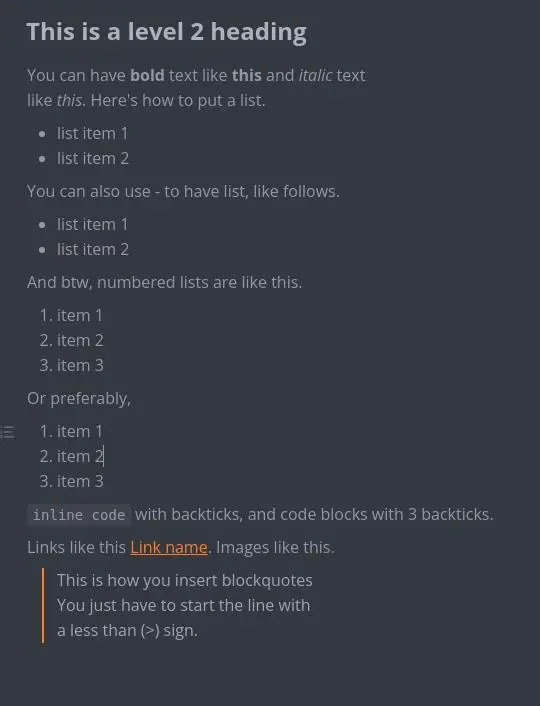Markdown is the simplest text markup language other than gemini. I would not
be incorrect if I say markdown will only be second to gemtext and plain .txt
text files in terms of simplicity. Unfortunately, there are more people who don’t
even know what markdown is than the people who know.
Jump directly to markdown cheatsheet
If you want to take some notes during a lecture or during a presentation etc, your note will mostly be plain text. Sometimes it may contain rich elements like graphs, columned layouts etc. but those occasions are rare.
I’ve seen people using softwares like MS Word to take simple notes. While that’s the most accessible way for most computer users, it’s not the most efficient way due to several reasons. I list some of them below.
- Word files (
.docx) are complex file types. - Word editing software are usually heavy and more resource intensive.
- Because file formats like
.docxor.odtare complex, those files will not be readable without the niche software like MS Word or LibreOffice Writer.
Because most of your notes are just plain text, you can use the plain old .txt
text file format to save them. Because of how lightweight text file format is,
it’s very efficient to take notes in .txt format. You can use the old windows
notepad or a little more advanced tool like notepad++ to take plain text notes.
But what if you need add little more formatting to your documents such as bold text, images and headings? MS Word is still not an answer because there’s a solution which let you use all the formattings without compromising efficiency.
That solution is MARKDOWN!!!
The markdown file format
Markdown files are just like plain old .txt files but the file extension needs
to be .md instead of .txt. Markdown is dead simple, I’ll show you an example
which will make you understand markdown immediately.
This is an example file called markdown-note.md.
| |
As you can see, markdown format is dead simple. You don’t need special software
to read a .md file. You can just use the plain old notepad or notepad++, but
because it’s markdown, we can use markdown previewer software to see a properly
formatted output.
- Marktext
- Visual studio code
To download marktext, visit marktext github release page
here and download the
marktext-setup.exe file for windows or marktext-arm64.dmg for mac.
Visual studio code is the ultra powerful option. To preview a markdown file
in VS Code, press ctrl+shit+v while opening the markdown file. Download
VS code here.

If you find this article useful, you are free to share, but more than that, I invite you to look more about this if you feel like this article is not enough. Here’s a good starting point other than google.com.
Thanks for stopping by 💗